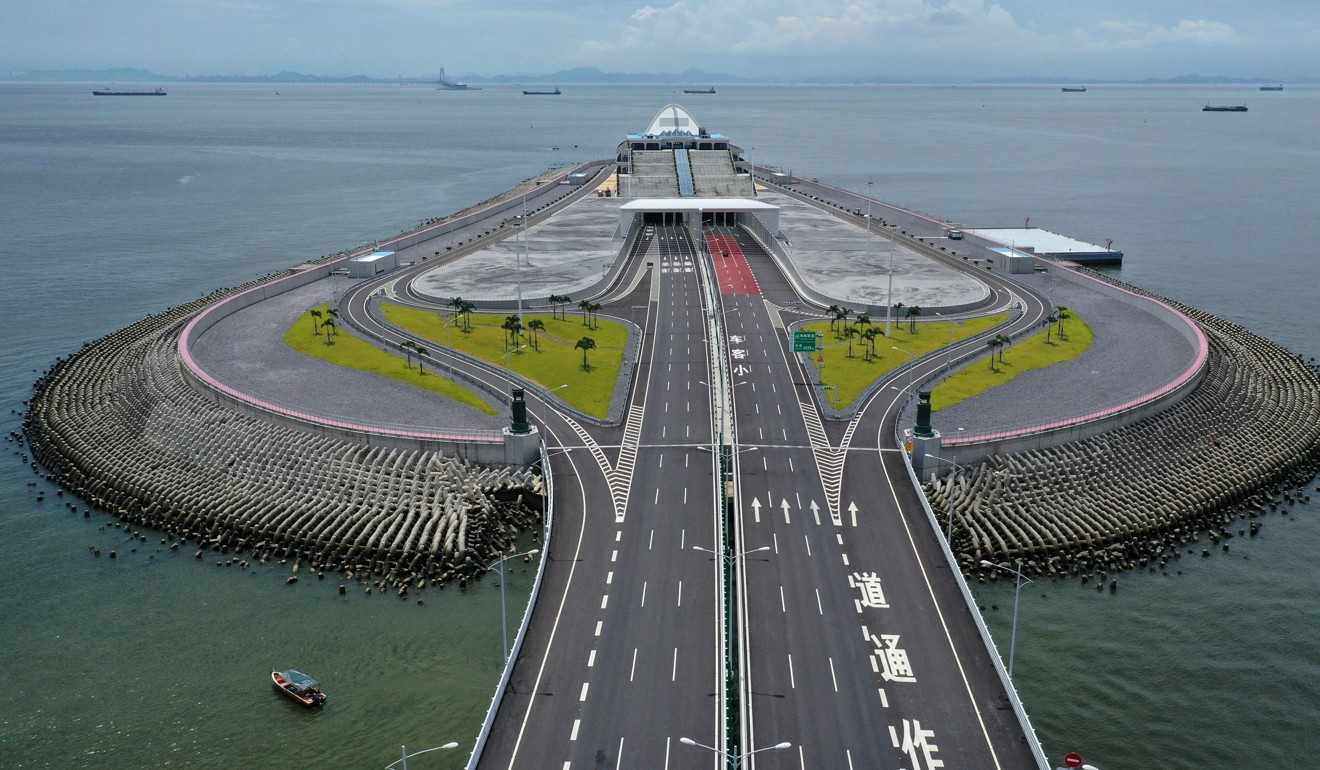
Why an industrial accident could mean a life of pain and poverty for Hong Kong construction workers
- There were 3,541 reported cases of construction workers being injured on the job in Hong Kong last year
- City’s leader Carrie Lam recently announced a three-year pilot work injury rehabilitation programme in industry
When Hong Kong construction worker David Wong (not his real name) fell 1.5 metres from a crane and landed flat on his back on a loading truck in 2017, he could not have imagined two years on, he would still be suffering from the work injury, and worse still, left impoverished by it.
Despite bumping his head and back and getting a swollen left hand immediately after the accident, the father of one returned to work a week later, after getting Chinese medicine treatment.
Wong, 50, soldiered on for six months until one day in April 2018 when he felt acute pain in his waist.
He was given a painkiller and told to wait two years for a public specialist’s appointment. Unable to stand the pain any longer and anxious to resume work, Wong spent HK$130,000 (US$16,670) from his savings and from loans for orthopaedic surgery at a private hospital to remove a herniated disc that compressed his spinal nerve, causing back pain.
“No one could tell me what went wrong, but I came out of the operating theatre still feeling the same pain. So I ended up skint and in debt, and back on the queue for a public specialist.”
There were 3,541 reported cases of construction workers being injured at work in Hong Kong last year.

Wong said, however, the scheme would not help him as he did not officially report the case as a work injury and accepted a private settlement from his company for the initial medical cost instead.
Currently, in regular cases of work-related injuries, those hurt are entitled to one-off compensation, plus 80 per cent of their monthly salary and a daily HK$300 medical fee for up to two years.
But Siu Sin-man, from the Association for the Rights of Industrial Accident Victims, said it was common for subcontractors to offer a one-off settlement to injured workers to avoid paying higher work insurance fees, losing out in bidding for future construction tenders, or even getting their entire project stopped by the Labour Department.
“There is a widespread and systemic culture of private settlement and cover-ups, which harms workers’ rights and protections in the long run, as it will be harder for them to claim future medical fees if their wounds or illness flare up again,” Siu said.
“The new scheme, for all its good intentions, fails to address this root problem, and will still leave workers open to abuse and exploitation.”
There is a widespread and systemic culture of private settlement and cover-ups, which harms workers’ rights and protections in the long run
A spokeswoman for the Labour and Welfare Bureau said employers were legally obliged to notify the Labour Department on work injuries to employees, and were liable to a maximum fine of HK$50,000 if they failed to do so without a reasonable excuse.
Public information on the new proposal remains scarce, but a government source confirmed that construction workers who had taken sick leave for six weeks or more would be able to consult a private orthologist, occupational therapist or physiotherapist for free.
“We are still hammering out the details as to how the plan will operate, but the initial thinking is there should be no upper limit to the number of consultations for patients, and the government will pay for it out of the public purse, because we believe in early intervention so workers will not miss the crucial golden period of recovery and can get back to work as soon as possible,” he said.
The Occupational Safety and Health Council will be given extra powers to administer the programme, which is expected to be rolled out in 2022 at the earliest.
Siu said while the initial signs of the programme were promising, the devil was often in the details.
“There must be enough medical professionals enrolled in the programme to minimise waiting times for injured workers, otherwise some like Wong will still pay for faster treatment outside.”
Employers must also be encouraged to re-employ rehabilitated workers, she added.
Wong, meanwhile, wants the programme to give great autonomy to workers to choose their preferred doctors, and even opt for others on the list in the middle of treatment, referring to his own experience of a failed operation.
He said he still hoped to get his old job back one day but admitted it was unlikely.
“I used to make between HK$20,000 and HK$40,000 a month depending on the amount of work, and I took great pride that I put food on the table, and a roof over my family’s head,” Wong said.
“I contemplated suicide when I realised I was unable to provide for my wife and daughter, and I seemed to be getting nowhere.”
Wong saw a specialist at publicly run United Christian Hospital in February this year, and is receiving physiotherapist training and support.
“The darkest period of my life has now passed. But I am still glad the new scheme will benefit future generations of construction workers. I hope the government will get the details right and not let us down.”
